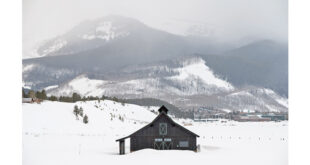I could write about a 68-year-old woman on Monday kicking the butt of a bully who claims he only wins…but I don’t think I have to since it happened in front of 80 million people and pretty much everyone from college students watching the debate to Fox News commentators admit that was the outcome. Preparation matters in life and Donald was not prepared. Let that be a lesson. My guess is he won’t make that mistake next time so it ain’t over ‘til it’s over, but wow—what a show.
Instead I’ll write about the local debate that was taking place at the exact time Hillary was pummeling Donald on Monday.
Monday evening, the Crested Butte Town Council laid out the general parameters of how they want to proceed with the short-term rental (STR) issue. Essentially, they want to put a limit on the number of houses that can be used for short-term rentals in town, while giving wide latitude to people who live in town year-round but sometimes rent out their primary house or a room in their house.
It seems the committee that studied and drilled down into the issue this past summer did a good job of defining the problem and coming up with how to address it. There is the so-called “low hanging fruit” that is a no-brainer in the sense that STR license fees should be raised to pay for oversight; safety measures should be implemented; and rental practices should be codified to ease some of the negative pressures on individual neighborhoods. That is all good, easy stuff.
The crux of the issue is what sort of limits to put on the STRs. The committee’s cornerstone question was “‘Is there a point where STRs are harmful to Crested Butte?” Pretty much everyone can agree that at some point, if the entire town is made up of houses that are rented out, it turns the place into a hotel instead of a community. And the feel of real community in a world that seems to be losing brick-and-mortar communities in favor of virtual Facebook communities is a valuable and soulful aspect of Crested Butte.
So the answer to the question is: Yes, there is tipping point. And most of the audience who attended Monday’s special council meeting appeared to agree with that sentiment. That’s not to say there weren’t concerns voiced over things like if and how to transfer the STR licenses or what cap number is best. But that is where the council has to now take over where the committee left off and dig deeper to find a logical number and process. Is it legal to prohibit the transfer of a license when the house is sold? Is it right to take that element away from someone who owns a house in town and rents it? Will it impact property values? Does it matter if a house is worth $1.2 million with the license and $1.1 million without it in terms of affordable housing—neither could qualify for affordability to a working family in the valley. That ship has sailed. So why not allow the licenses to be transferred with the sale of a home? It won’t increase the STR numbers and it reflects today’s reality.
If the idea is to set a logical limit, then the committee is onto something to raise the license fees and see how many owners actually jump in the rental pool. I would suggest setting the limit at the current number of people with such licenses as of, say, November 1 or December 31. Make it clear the council will relook at the numbers in November 2017 and reset the permanent cap at the number of licenses that are actively being used at that time. And then call it good. That will give people a chance to get into the STR game over the next month. Everyone seems to agree that after the talk of the potential moratorium on STR licenses there was an immediate “gold rush” to get in the game. That raised the percentage of houses with (or soon to have) STR potential. But the consensus appears to be that number will actually go down as some people rushed in to protect themselves against the moratorium more than they really wanted to set up their place for vacation rentals.
Given the fact that five of seven councilmembers have these STR licenses, the fair thing to do is keep it open another month or so and then put the cap at that limit. It sort of addresses an obvious conflict of interest issue and will give people a chance to see if they really want to take on that work and pay the increased license fees. If not, they’ll drop out and the number of STRs will likely decrease somewhat. A market balance will be established.
That process will essentially take what we have today with STRs and freeze it. It stops the growth of STRs but allows people to make some money, especially year-round residents who could use help with a mortgage, while still providing tourism beds in town.
The council and staff now have to come up with the logical nexus of why that can and should work. That’s where that preparation thing comes into play.
Like at the other political debate Monday night, this council has to have the courage to stand up in front of people who might disagree with them and explain why it is in the best interest of the town. Let’s see what they come up with in the next month.
And finally, a shout out to Matt Miles of Montrose, who came in, purchased the trophy elk rack that has been a part of Crested Butte for more than a century, and wants to keep it here. He paid a pretty penny for the antlers and his intention is to have them remain on display for the general public. That is a very generous move and one that I am sure everyone in Crested Butte appreciates. The money will go to help some local old-timers who have been good stewards of the elk for decades.
Matt explained his passion for elk hunting and his desire to protect a piece of local hunting history. He wants others to have a chance to be wowed by the size of an elk that roamed the nearby countryside. The story couldn’t have ended much better once we found out the elk was going up for auction. So again—thanks for the generosity.
—Mark Reaman
 The Crested Butte News Serving the Gunnison Valley since 1999
The Crested Butte News Serving the Gunnison Valley since 1999





